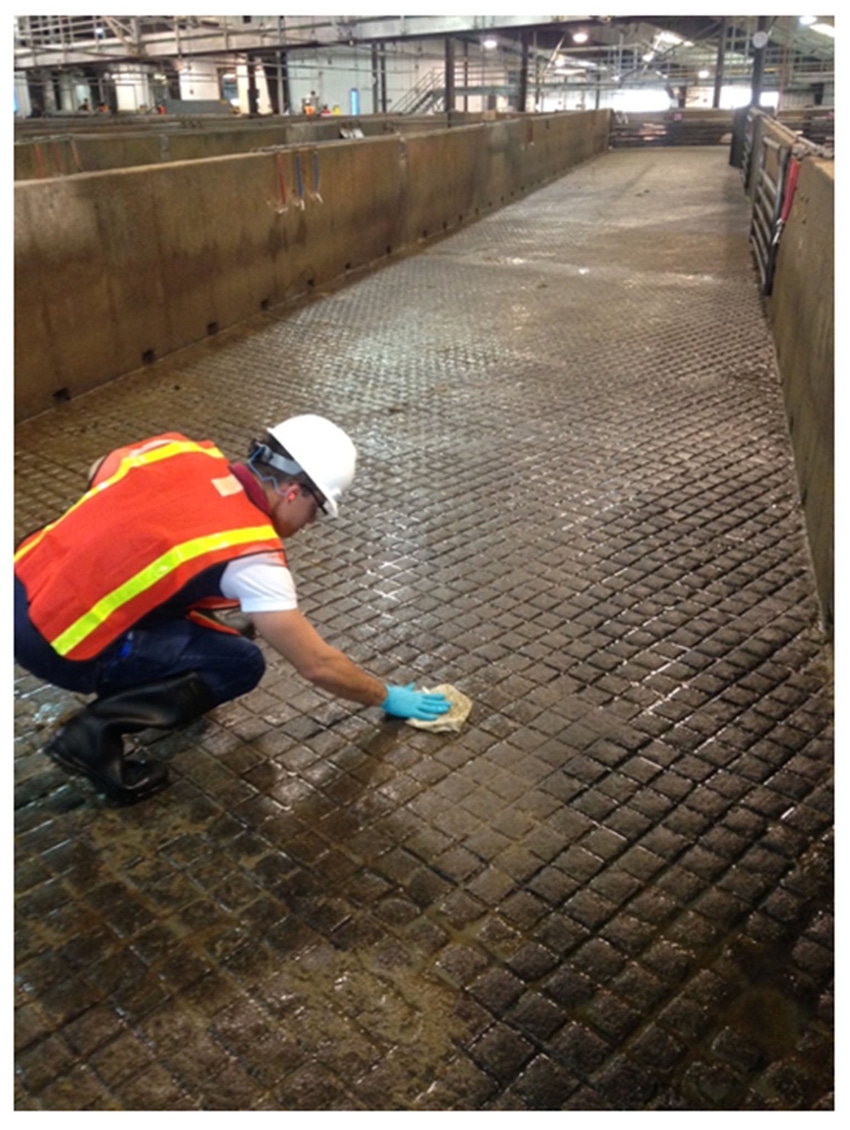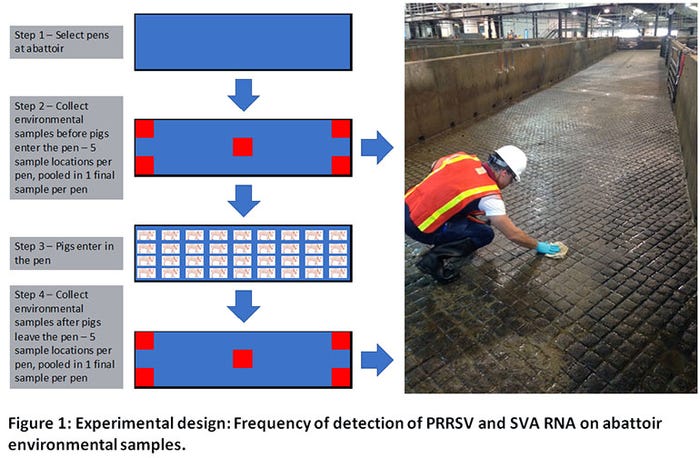In this study, both PRRSV and SVA were found to be common contaminants of the abattoir environment, with SVA showing a much higher frequency of detection than PRRSV.
May 2, 2017

By Marcelo Almeida, Jeff Zimmerman and Daniel Linhares, Iowa State University College of Veterinary Medicine, Veterinary Diagnostic and Production Animal Department
When the United States was first hit by porcine epidemic diarrhea virus, research demonstrated that trailers coming back from packing plants had a good chance (odds ratio > 3.0) of being contaminated with PEDV, as shown by polymerase chain reaction testing positive.
That research raised concerns about sanitation practices for trailers and the potential for pathogens present at the abattoir to be spread back to farms by trucks and trailers. Despite the “red flags” raised by this very real threat, there is little information about which agents are present in the abattoir environment and, therefore, could be transmitted to farms.
Therefore, we investigated the presence of two pathogens of concern for the U.S. swine industry: porcine reproductive and respiratory syndrome virus and Senecavirus A.
The objective of this column is to summarize the data collected at the abattoir and report the frequency of detection of PRRSV and SVA on environmental samples collected in an abattoir in the Midwest region of the United States.
Material and methods
Environmental samples (n = 64) were collected at the abattoir before and after 32 groups of pigs entered and left holding pens. Each environmental sample was a pool of five sampling locations within one pen (northeast, northwest, southeast and southwest corners plus one sample from the middle of the pen).
Samples were tested at the Iowa State University Veterinary Diagnostic Lab (Figure 1) for PRRSV and SVA RNA by PCR. The frequency of detection of these two pathogens was compared using samples collected before and then after the groups of pigs entered the holding pens.

Results and discussion
Overall, 64% (41 of 64) of the environmental samples were positive for SVA and 8% (five of 64) were positive for PRRSV. Before groups of pigs entered, 56% of the holding pens were positive for SVA and 9% for PRRSV. After the pigs left the pen, 72% were positive for SVA and 6% for PRRSV.
In this study, both PRRSV and SVA were found to be common contaminants of the abattoir environment, with SVA showing a much higher frequency of detection than PRRSV. These findings highlight the potential role of the abattoir as a link in the maintenance and/or spread of endemic pathogens (such as PRRSV) and newly introduced pathogens (like SVA) within the U.S. swine population. Likewise, these results underline the importance of trailer sanitation in the overall farm biosecurity package.
Acknowledgments
The implementation of this project was possible due to support from Tara Donovan and Kate Dion veterinarians with The Hanor Co.; Deborah Murray veterinarian with New Fashion Pork; and Barry Wiseman veterinarian with Triumph Foods LLC. We also thank Rodger Main from ISU-VDL, Jerry Torrison from the University of Minnesota and Jane Christopher-Hennings from SDSU. Likewise, we acknowledge Will Lopez and Gustavo de-Souza-e-Silva from ISU VDPAM for the significant field support. Funding was obtained from the Swine Health Information Center.
You May Also Like



